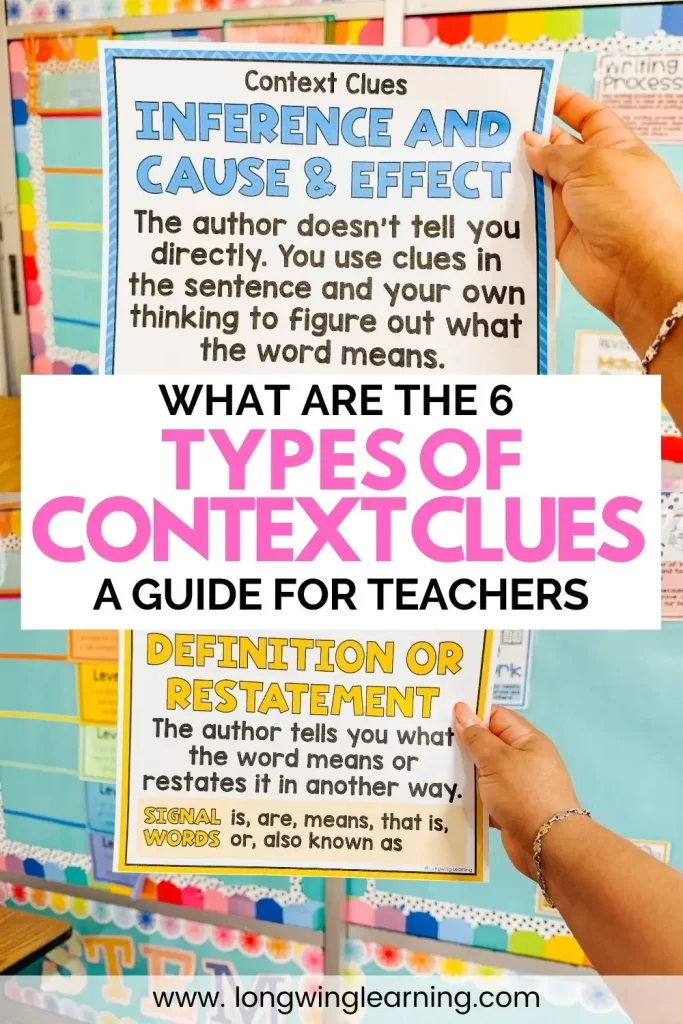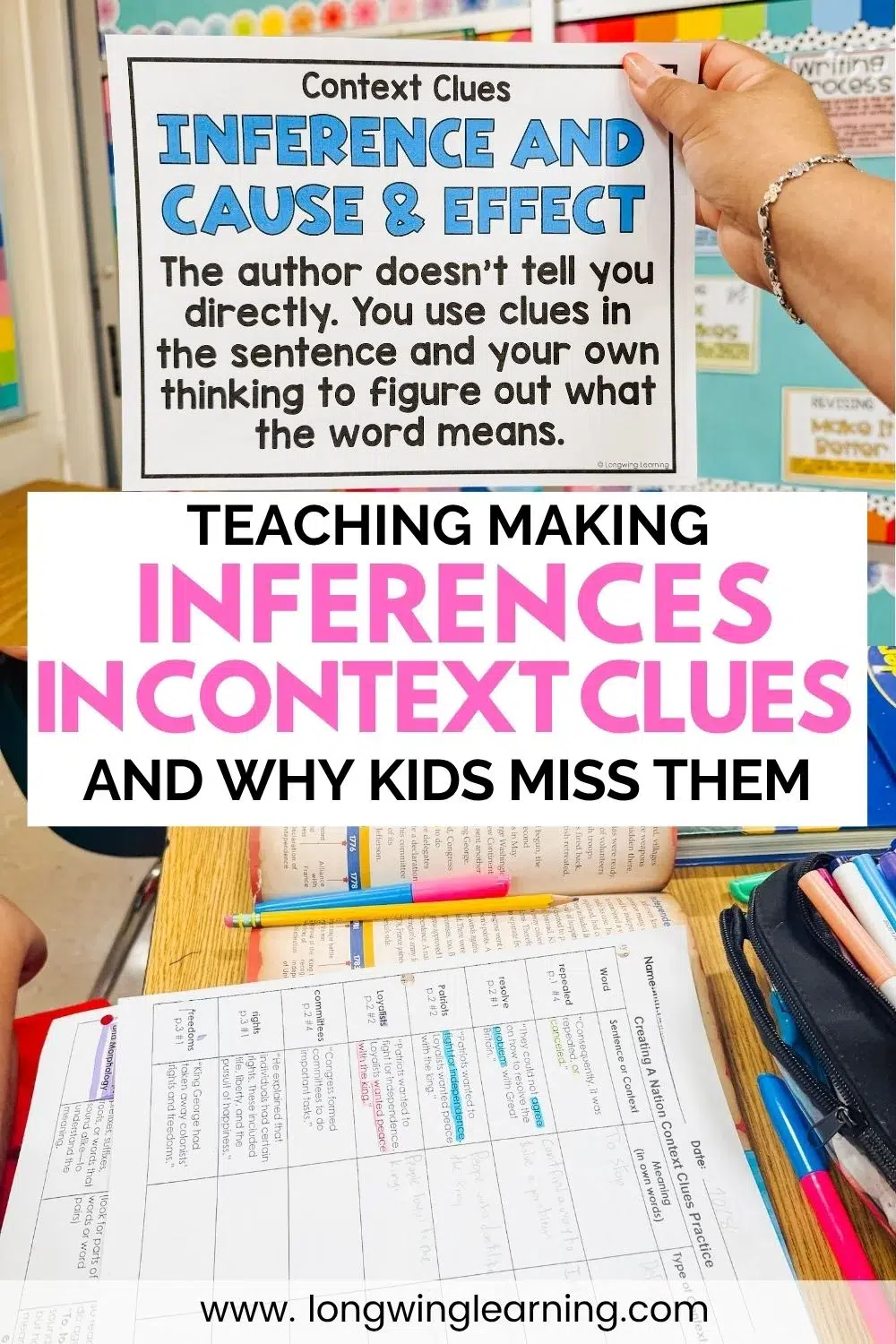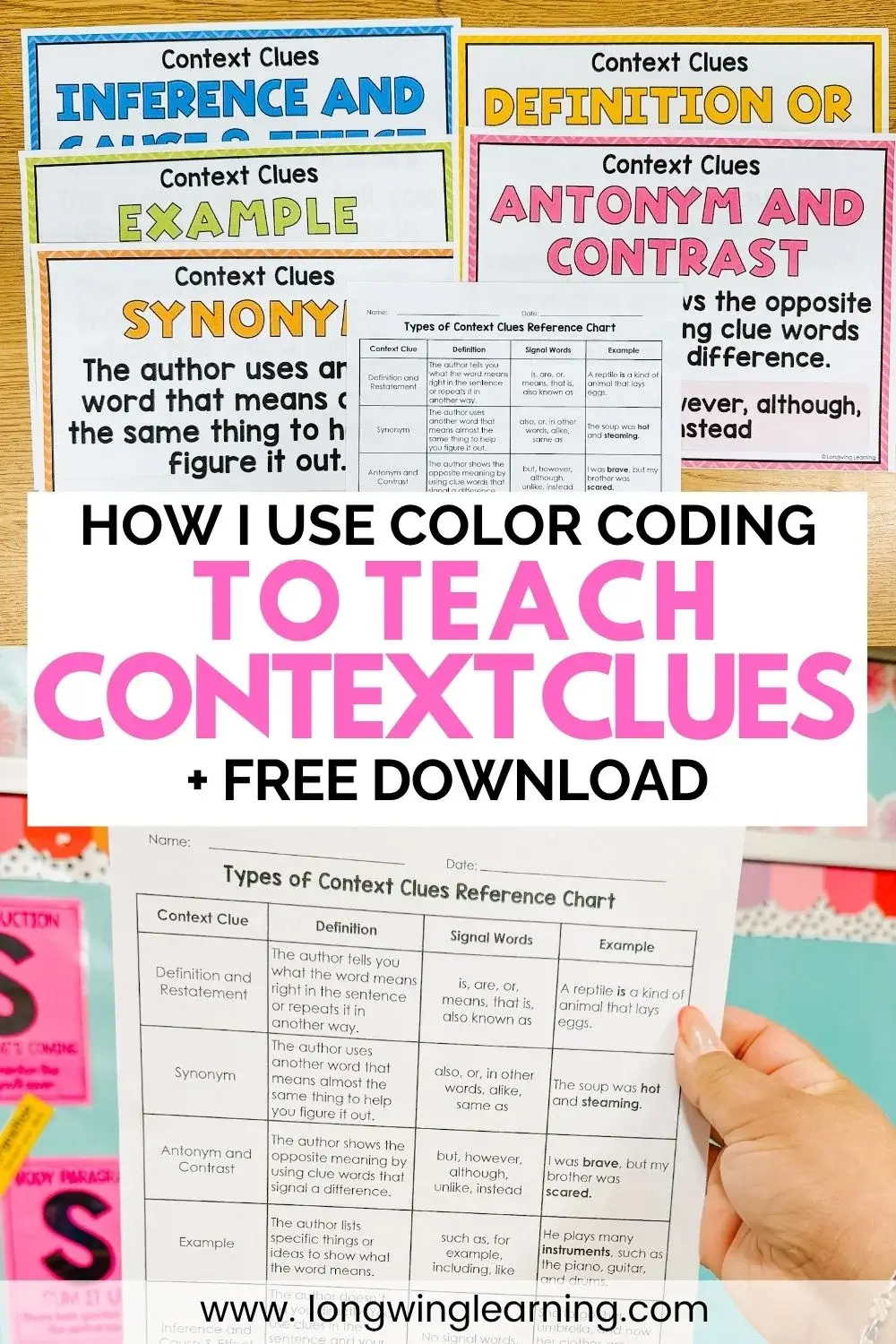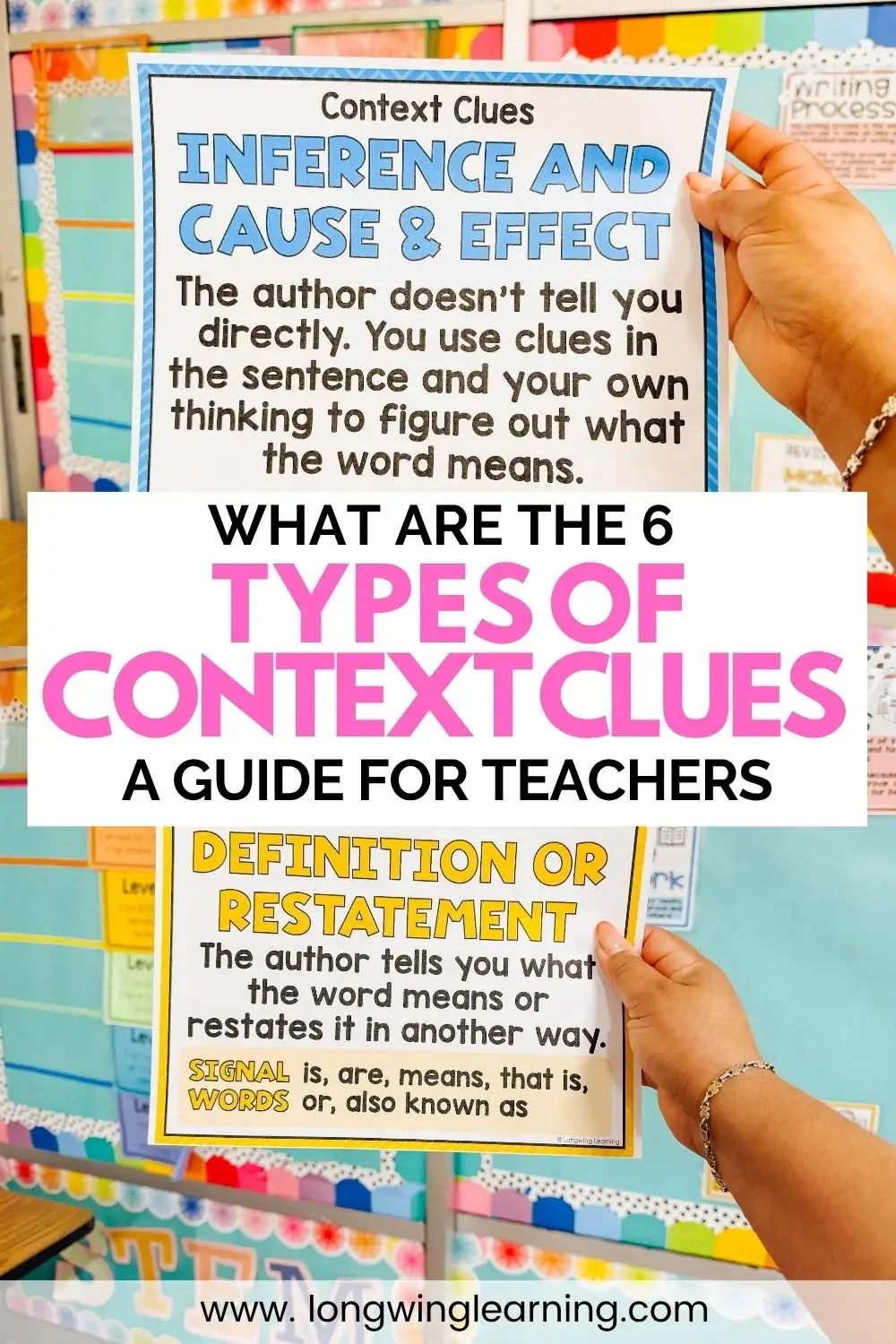If you’ve ever told students to use different types of context clues and watched blank stares appear, this post is for you.
In upper elementary, understanding the types of context clues helps students move from guessing to truly unlocking word meaning.
Let’s break down what each type looks like and how to make them stick in your classroom.
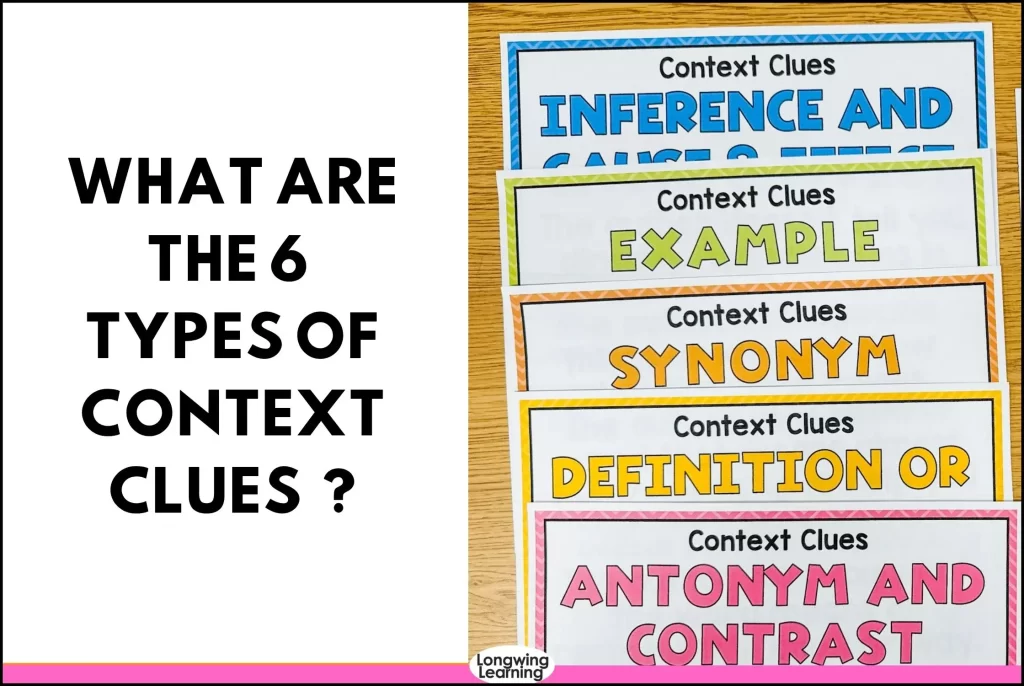
Let’s be honest: the term context clues gets thrown around a lot in vocabulary instruction, usually followed by a worksheet and a quick mention of “just look around the word.”
But here’s the thing…
Understanding context clues deeply and teaching them explicitly can significantly impact how your students approach complex texts.
It’s not enough to say, “Use context clues.” In upper elementary, especially in 4th and 5th grade, students are being asked to do more than just identify an unknown word.
They’re being asked to analyze its meaning, determine how the surrounding text helps, and sometimes even explain the author’s purpose in choosing that word.
So let’s go beyond the basics.
Table of Contents
Why “Use the Clues” Isn’t Enough: Students Need Explicit Context Clue Instruction
A lot of students are taught:
- “Use clues around the word to figure it out.”
- “Look for definitions or examples.”
- “Guess what it means and move on.”
While these are well-meaning strategies, they’re often too vague. Students need scaffolds. They need visual supports. And most of all, they need to know that context clues come in different forms.
Once I started explicitly naming and modeling each type of context clue, everything changed in my classroom.
Students started noticing patterns. They got excited about using highlighters (more on that in a second). And their vocabulary awareness grew in meaningful, measurable ways.
Let’s break down the 6 main types of context clues you’ll want to teach (and yes, you should absolutely name them with students):
Types of Context Clues and Examples
1. Definition or Restatement
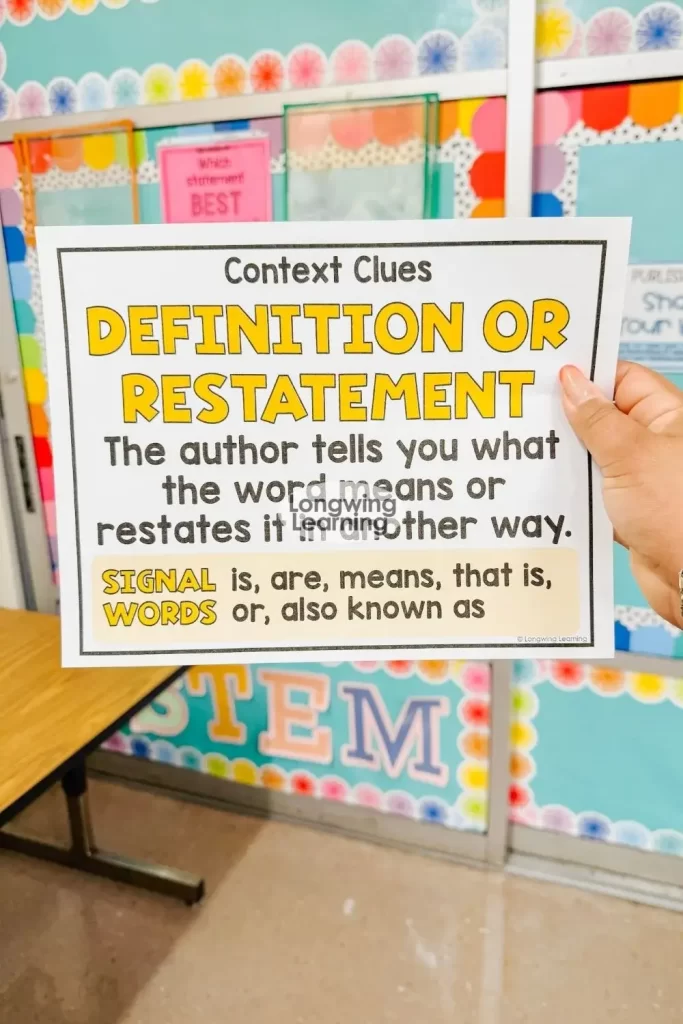
The word is defined directly or restated in simpler terms.
Example: “The habitat, or natural home, of the fox was deep in the forest.”
Teach Tip: Have students underline the word, then highlight the clue that defines it.
2. Synonym or Similar Meaning
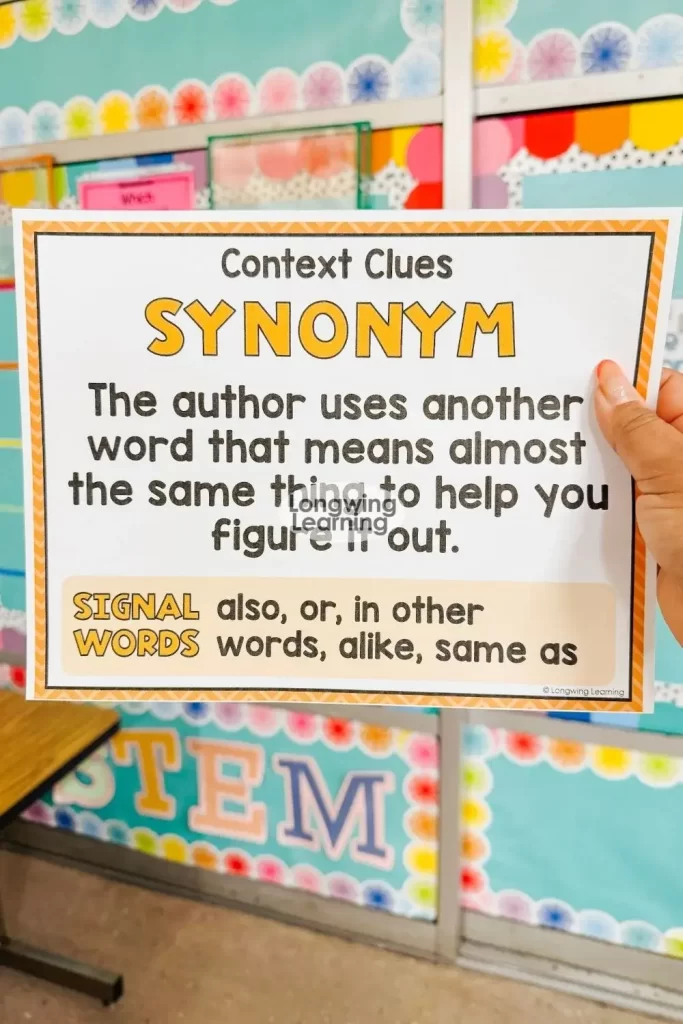
A nearby word means the same or a similar thing.
Example: “The girl was elated, or very happy, about her test results.”
Teach Tip: Color-code with highlighters to make the synonym pop.
3. Antonym or Contrast
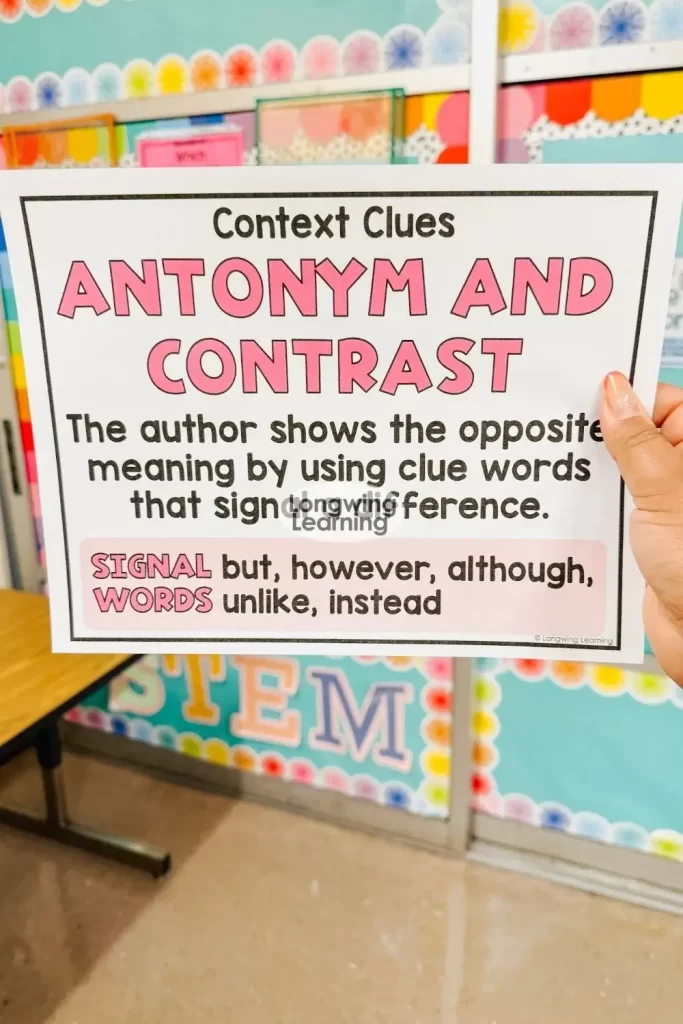
The opposite of the word is used to create contrast.
Example: “Unlike his gregarious brother, Liam was quite shy.”
Teach Tip: Show how contrast clues are often introduced with unlike, but, or however.
4. Example or Illustration
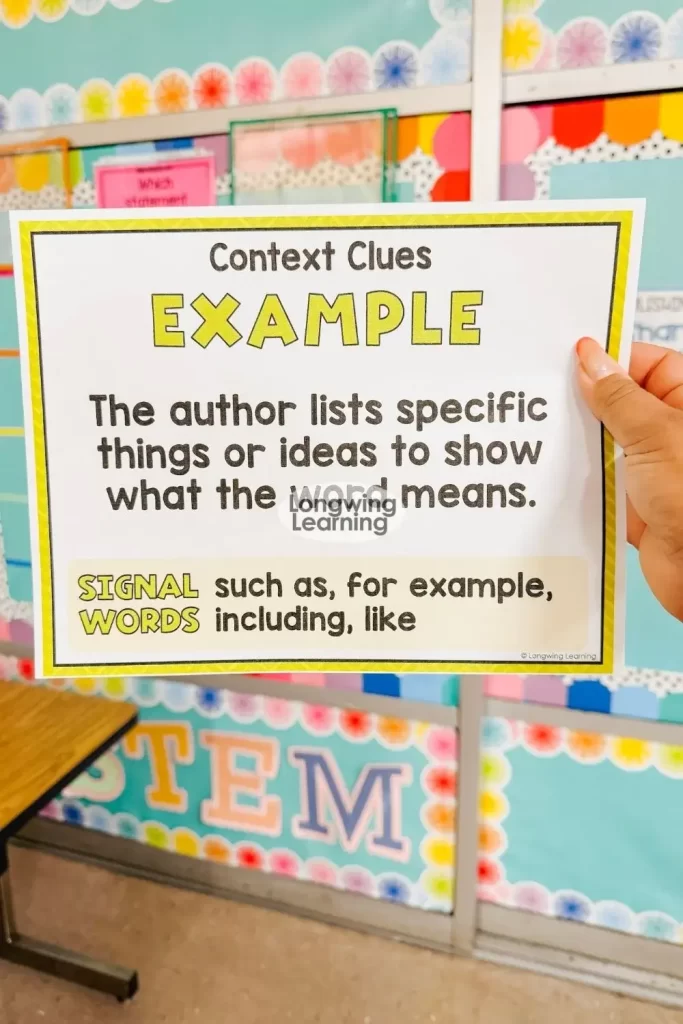
A word is explained through a list or an example.
Example: “Celestial bodies, such as the sun, moon, and stars, can be seen at night.”
Teach Tip: Encourage students to look for phrases such as, for example, or including.
5. Inference / Cause and Effect
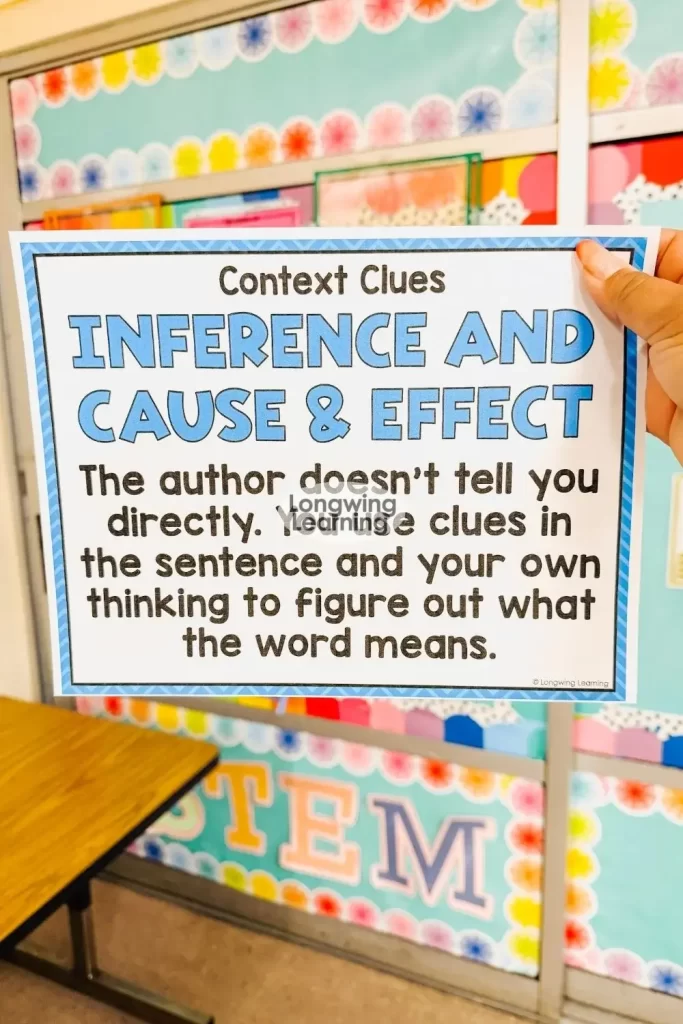
The meaning is revealed through relationships between ideas.
Example: “The land was barren, so the crops failed to grow.”
Teach Tip: This is often the trickiest; help students infer meaning through cause and effect.
6. Word Relationship and Morphology (Prefixes, Suffixes, Roots)
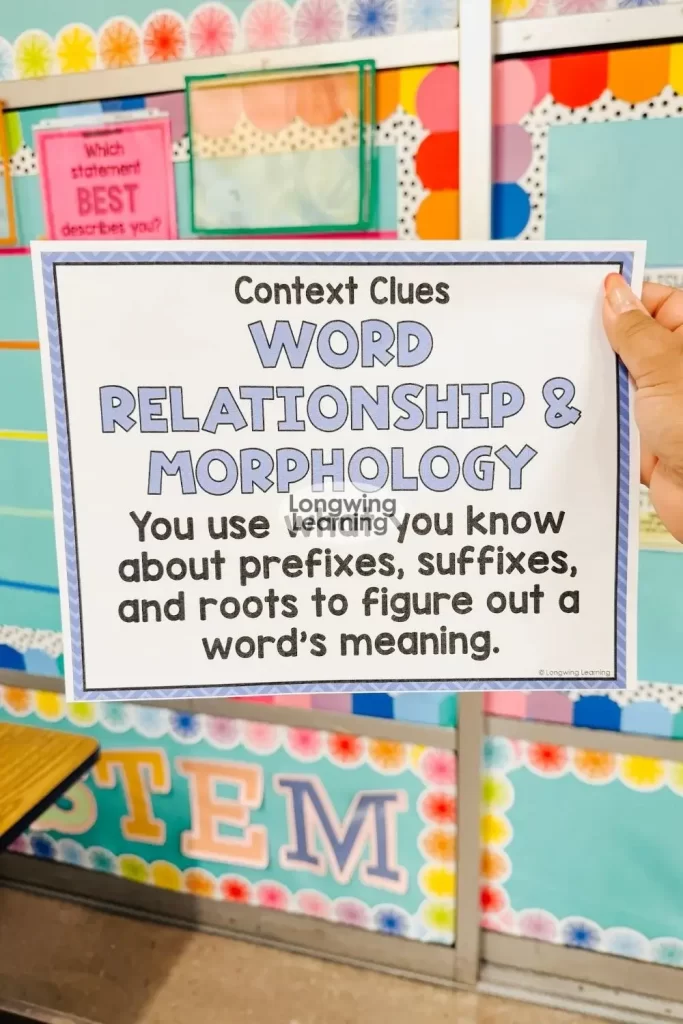
Students break down parts of the word for clues.
Example: The biologist studied marine life. (bio = life)
Teach Tip: Integrate your roots and affix instruction here; this boosts both vocabulary and decoding.
Teaching the Different Types of Context Clues
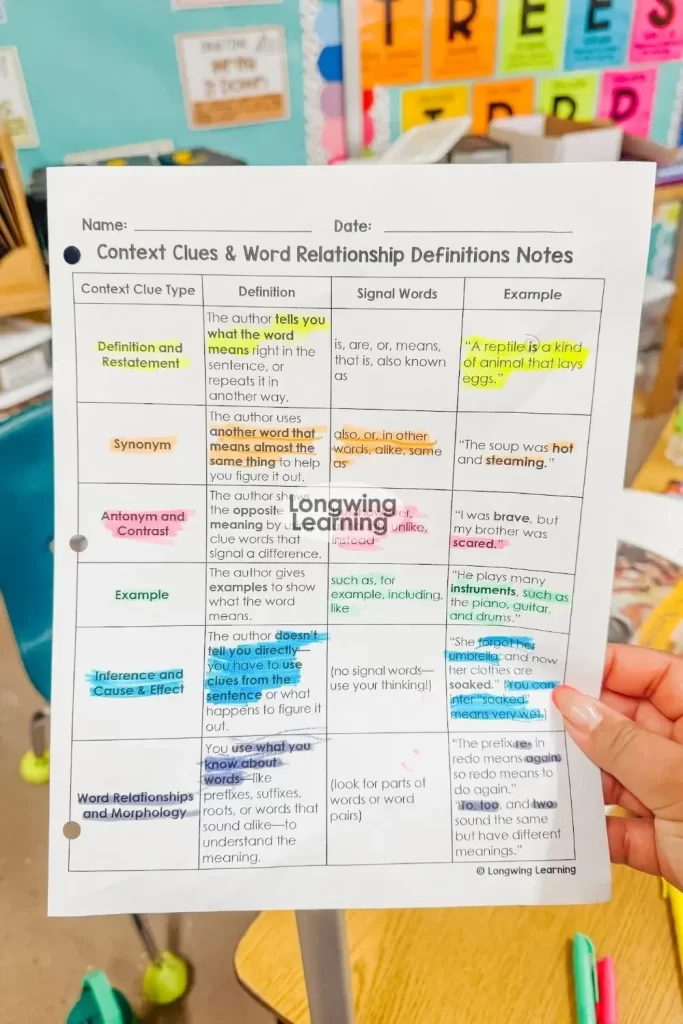
Here’s how I explicitly teach these types in whole group reading:
I use a multi-color pack of highlighters, each color assigned to one type of context clue.
My context clues posters match the highlighter colors for visual reinforcement.
When we read a text, especially during the second read, we pause when students come across a new word and we highlight the word. Then identify the context clue.
I’m not doing this so students can identify clue types on a test; they likely won’t be asked that directly.
But it builds metacognitive awareness. It helps them slow down, notice patterns, and begin to analyze how meaning is constructed, which is what the standards ask them to do.
I also give students a note sheet that introduces each type of context clues.
Students keep it in their reading folders, and I shrink it down to fit into their composition notebooks.
Grab the Free Context Clues Reference Sheet I Use With My Students
It includes examples and definitions of each clue type, plus sentence stems for practicing in context.
Perfect for:
- Guided reading groups
- Vocabulary notebooks
- Independent reading reflection
Ready to Go Deeper? Check Out These Classroom Tools
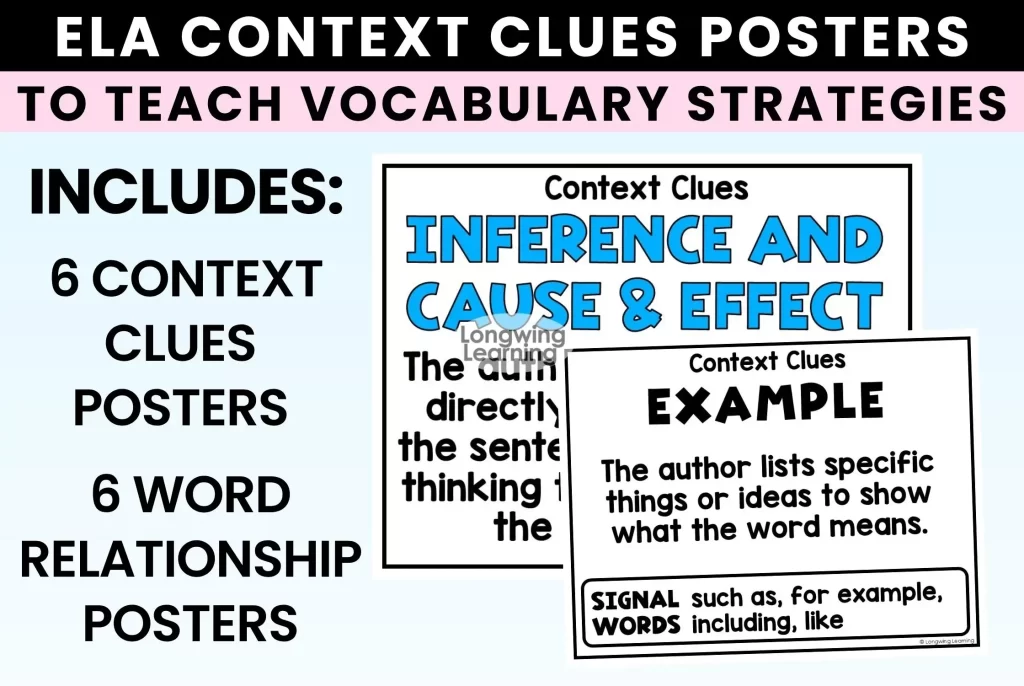
If you’re ready to make context clue instruction more visual, consistent, and effective, check out my full Context Clues Poster Pack here:
And if you’re diving deeper into morphology or figurative language this year, I’ve got companion packs ready to support that too:
Teaching Context Clues Is About More Than Definitions
Teaching context clues isn’t just about identifying a tricky word; it’s about building readers who can analyze and infer.
By naming the different clue types, using color-coded support, and revisiting this strategy all year long, you’re helping students build vocabulary and deeper comprehension skills.
This Is Just the Beginning: Explore the Full Vocabulary Strategy Series
Want to keep going?
This post is the first in my Vocabulary Strategy Blog Series; stay tuned for:
- How I teach with context clues with color coding
- Explicitly teaching context clues
- Why morphology matters
- Analyzing author’s word choice
…and let me know on Instagram @longwinglearning if you use it with your class!
